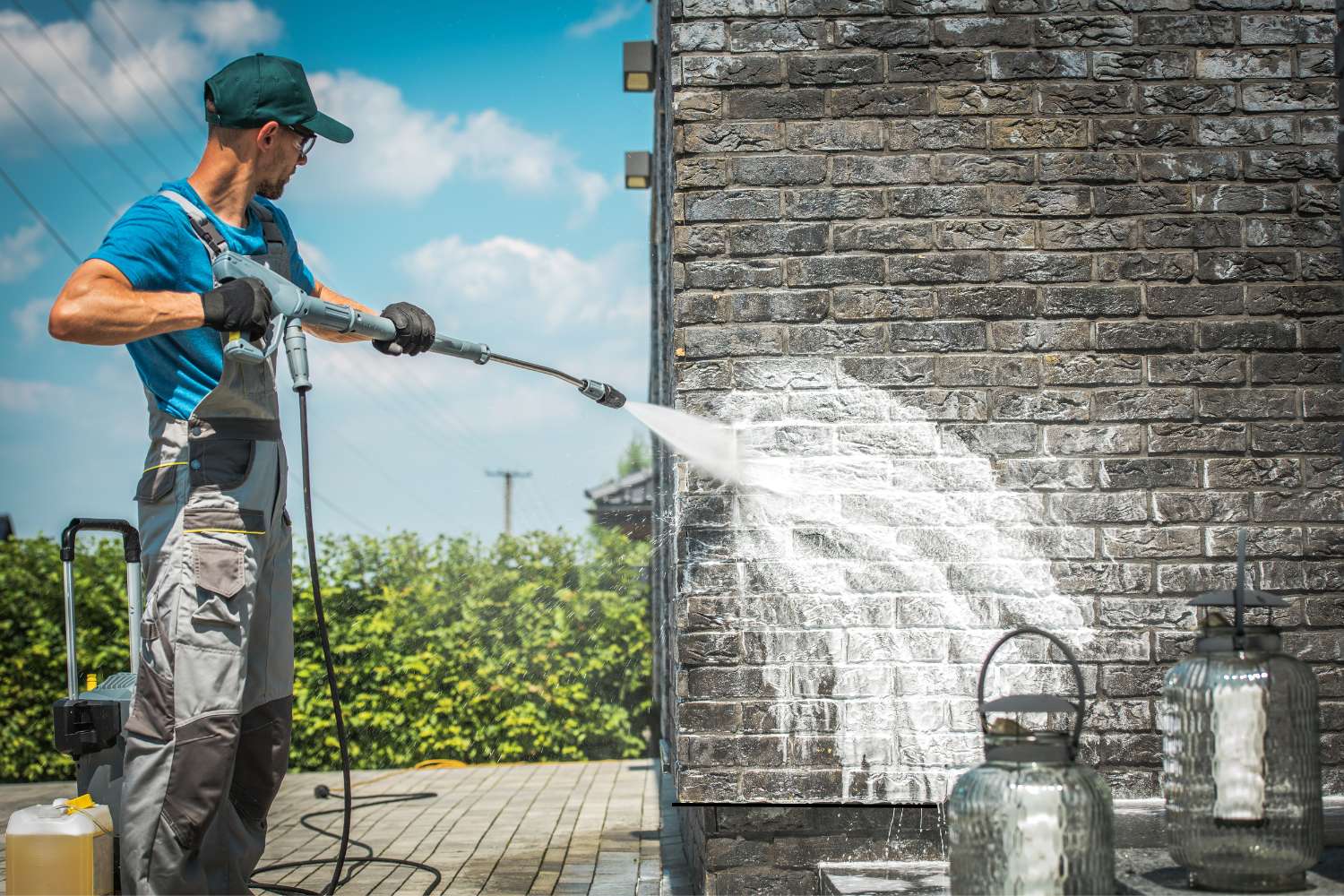Maintaining the exterior of a home in Brisbane presents unique challenges due to the region’s subtropical climate, characterised by high humidity, frequent rainfall, and intense sunlight. These conditions foster the growth of mould, algae, and other organic matter, requiring more effective cleaning strategies.
Two primary methods employed are soft washing and pressure cleaning. While both aim to restore the aesthetic appeal of a property, they differ significantly in their techniques, applications, and suitability. This article provides a comprehensive comparison of soft washing and pressure cleaning, addressing key considerations such as safety, time required, maintenance implications, and cost.
Safety Considerations
Safety is a critical factor when choosing between soft washing your home and pressure cleaning. Pressure cleaning utilises high-pressure water jets to remove dirt and grime, which can potentially damage delicate surfaces such as painted walls, timber cladding, or roof tiles. The force of the water can erode materials, dislodge tiles, and force water into crevices, leading to structural damage. It’s particularly risky on surfaces showing signs of wear or age.
Soft washing, conversely, employs low-pressure water combined with specialised cleaning solutions. These solutions, typically biodegradable and environmentally friendly, are designed to kill organic growth at its root, minimising the risk of damage to surfaces.
This method is particularly suitable for older or more fragile properties, where high-pressure cleaning could cause irreparable harm. Furthermore, the risk of injury to operators is reduced with soft washing due to the lower pressure involved, making it a safer option for both the property and the cleaning crew.
Time Required for Cleaning
The time required for each cleaning method varies depending on the size and complexity of the property, as well as the extent of soiling. Pressure cleaning can often be completed more quickly, especially for smaller homes with easily accessible surfaces.
However, for larger or more intricate properties, the time difference may be negligible. Soft washing requires a longer dwell time for the cleaning solutions to effectively penetrate and eliminate organic growth. This process typically involves applying the solution, allowing it to sit for a specified period, and then rinsing it away with low-pressure water.
While this may extend the overall cleaning time, it results in a more thorough and long-lasting clean. The time invested upfront in soft washing often translates to longer intervals between necessary cleanings.
Maintenance Implications
Maintenance considerations also play a significant role in the choice between soft washing and pressure cleaning. Pressure cleaning, while effective in removing surface dirt, does not eliminate the underlying organic growth.
This means that mould and algae are likely to reappear relatively quickly, necessitating more frequent cleaning, potentially every six to twelve months in Brisbane’s climate. Soft washing, on the other hand, targets the root cause of organic growth, providing a more sustained clean. This reduces the frequency of required maintenance, often extending to 18 to 24 months or more, saving time and money in the long term.
Additionally, the gentle nature of soft washing minimises the risk of damage to surfaces, reducing the need for costly repairs and preserving the integrity of the building’s exterior.
Cost Analysis
Cost is a crucial factor for homeowners when selecting a cleaning method. Pressure cleaning your home tends to be less expensive in terms of the initial service cost. However, the need for more frequent cleaning and the potential for surface damage can lead to higher long-term costs. Soft washing, while often more expensive upfront, offers better value over time due to its longer-lasting results and reduced risk of damage.
The specialised cleaning solutions and the expertise required for soft washing contribute to its higher initial cost. However, the savings realised through reduced maintenance and repairs make it a cost-effective option in the long run. Obtaining quotes from reputable cleaning companies is essential to compare prices and assess the value offered by each method, ensuring a balance between initial expense and long-term benefits.
Key Features:
- Soft washing utilises low-pressure water and specialised cleaning solutions.
- Pressure cleaning employs high-pressure water jets for surface cleaning.
- Soft washing targets and eliminates organic growth at its root.
- Pressure cleaning primarily removes surface dirt and grime.
- Soft washing is safer for delicate surfaces and older properties.
- Soft washing provides a longer-lasting clean, reducing maintenance frequency.
FAQ’s:
Q: Is soft washing safe for all types of house surfaces?
A: Yes, soft washing is generally safe for most house surfaces, including painted walls, timber cladding, and roof tiles.
Q: How often should I soft wash my house in Brisbane?
A: The frequency depends on environmental conditions, but typically every 12 to 24 months is sufficient.
Q: Can pressure cleaning damage my roof tiles?
A: Yes, high-pressure cleaning can damage roof tiles by dislodging them or causing erosion.
Q: Is soft washing environmentally friendly?
A: Yes, soft washing solutions are typically biodegradable and environmentally friendly.
Q: Which cleaning method is more cost-effective in the long term?
A: Soft washing is generally more cost-effective in the long term due to reduced maintenance and repairs.



